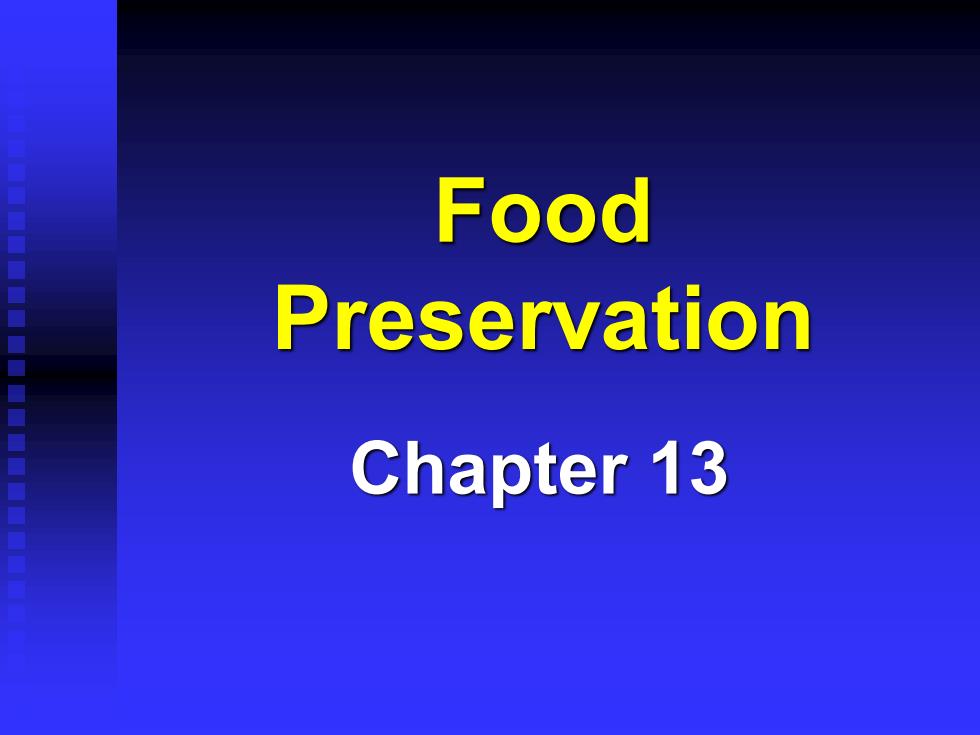
Food Preservation Chapter 13
Food Preservation Chapter 13
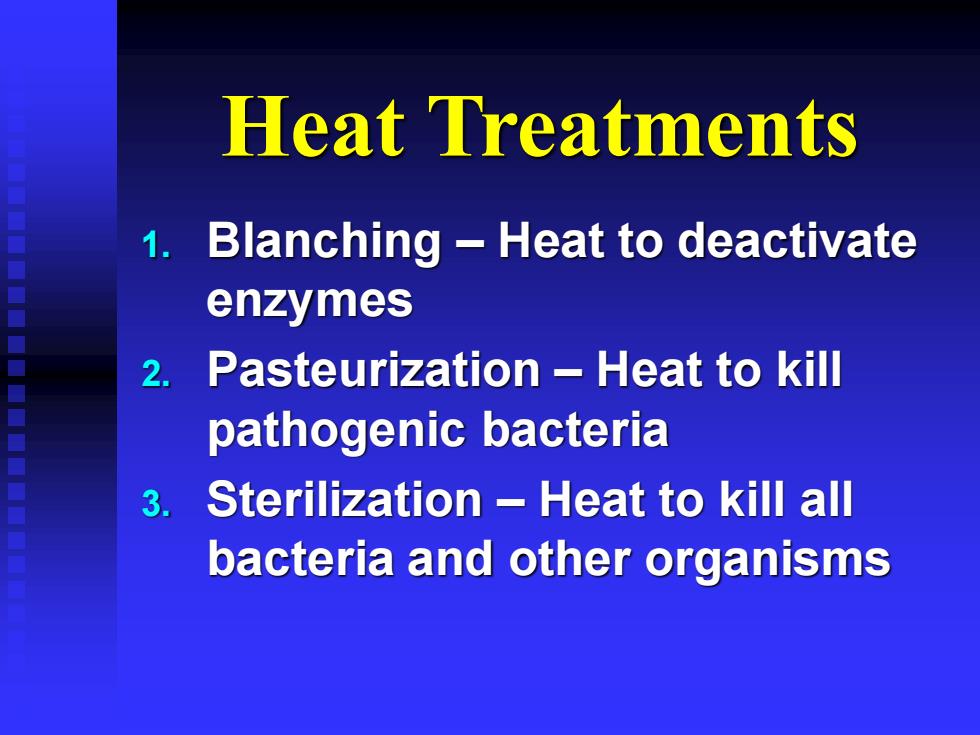
Heat Treatments 1. Blanching – Heat to deactivate enzymes 2. Pasteurization – Heat to kill pathogenic bacteria 3. Sterilization – Heat to kill all bacteria and other organisms
Heat Treatments 1. Blanching – Heat to deactivate enzymes 2. Pasteurization – Heat to kill pathogenic bacteria 3. Sterilization – Heat to kill all bacteria and other organisms
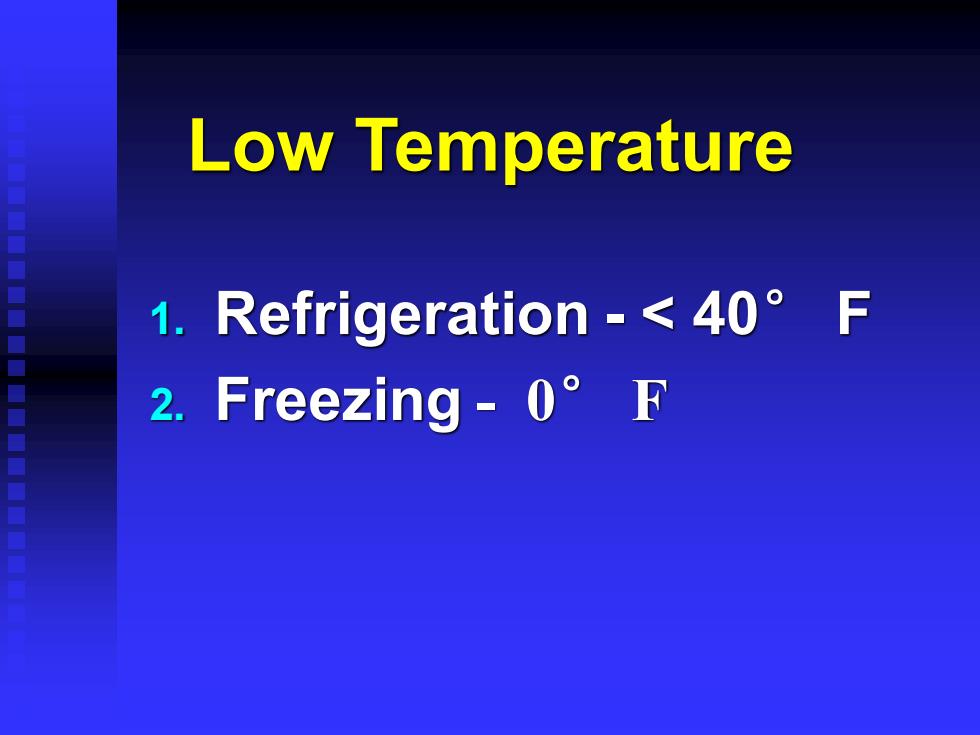
Low Temperature 1. Refrigeration - < 40° F 2. Freezing - 0° F
Low Temperature 1. Refrigeration - < 40° F 2. Freezing - 0° F

Lowering Water Activity 1. Dehydration 2. Concentration 3. Salt 4. Addition of Sugar
Lowering Water Activity 1. Dehydration 2. Concentration 3. Salt 4. Addition of Sugar
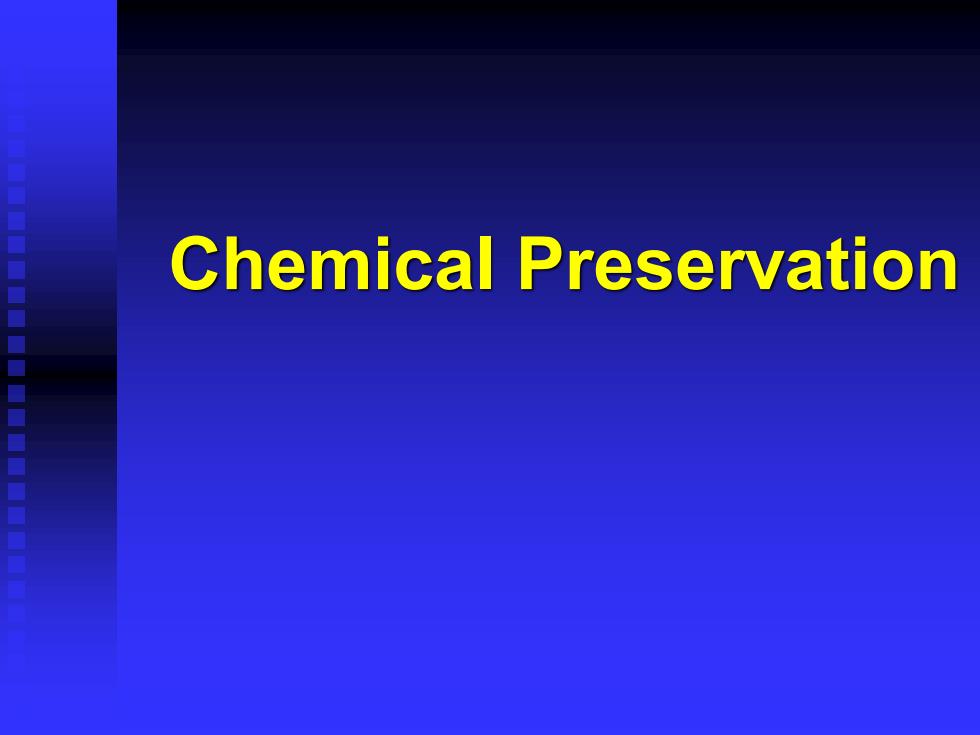
Chemical Preservation
Chemical Preservation
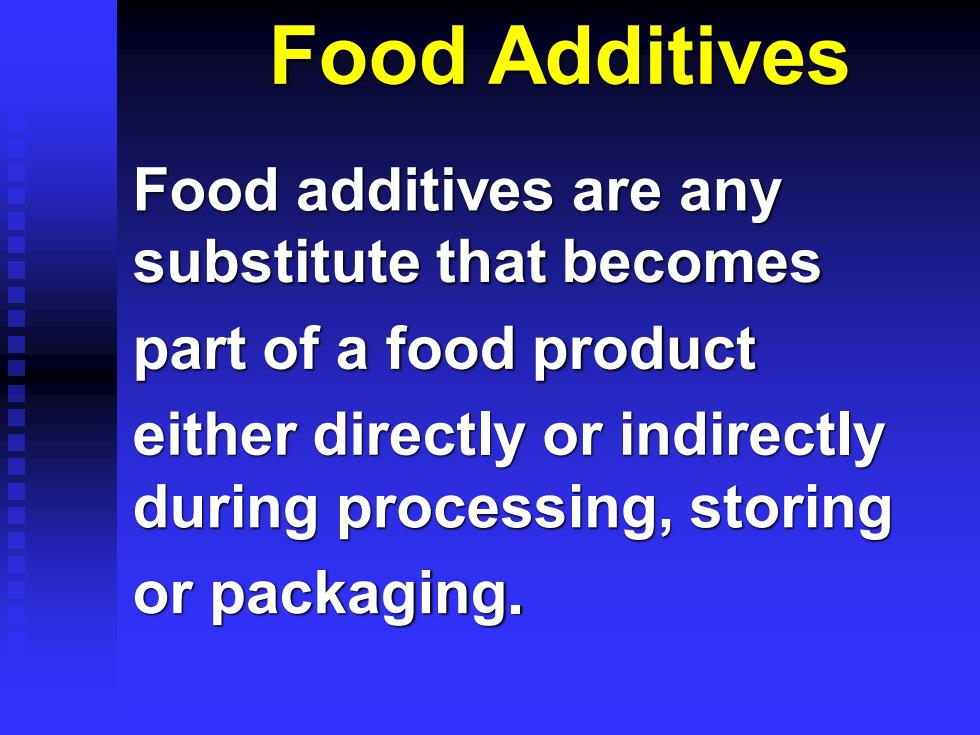
Food Additives Food additives are any substitute that becomes part of a food product either directly or indirectly during processing, storing or packaging
Food Additives Food additives are any substitute that becomes part of a food product either directly or indirectly during processing, storing or packaging
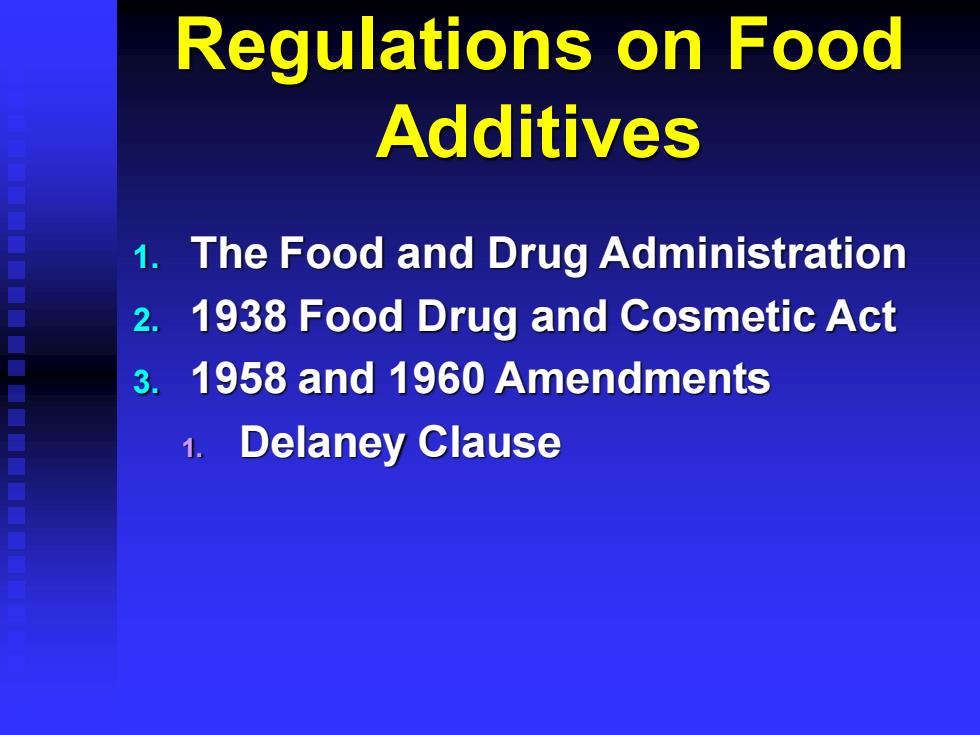
Regulations on Food Additives 1. The Food and Drug Administration 2. 1938 Food Drug and Cosmetic Act 3. 1958 and 1960 Amendments 1. Delaney Clause
Regulations on Food Additives 1. The Food and Drug Administration 2. 1938 Food Drug and Cosmetic Act 3. 1958 and 1960 Amendments 1. Delaney Clause
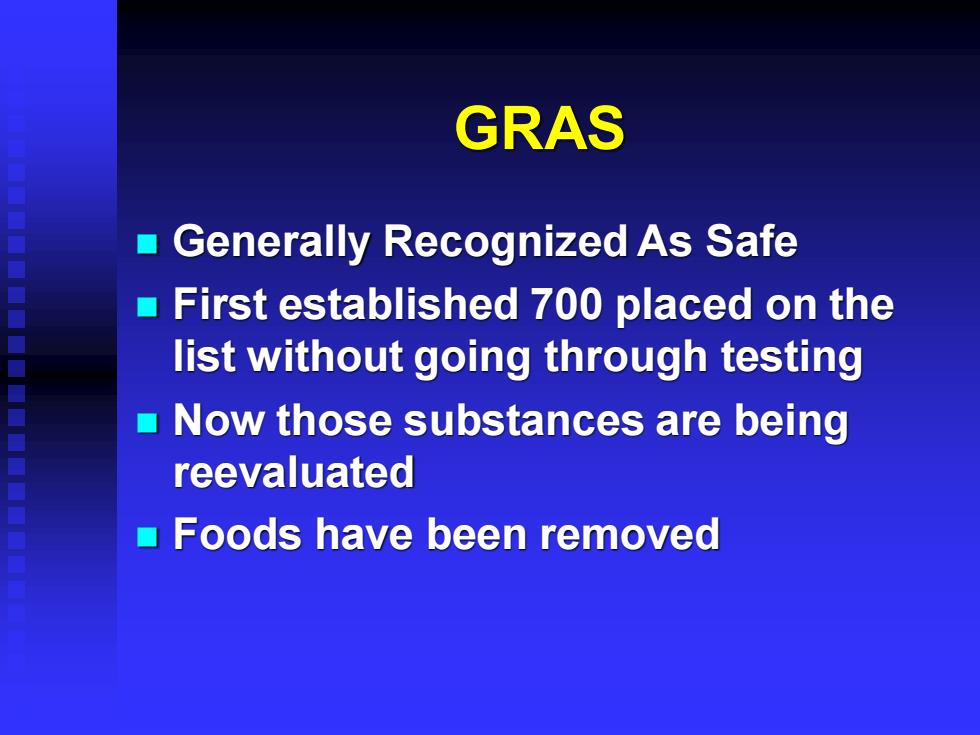
GRAS ◼ Generally Recognized As Safe ◼ First established 700 placed on the list without going through testing ◼ Now those substances are being reevaluated ◼ Foods have been removed
GRAS ◼ Generally Recognized As Safe ◼ First established 700 placed on the list without going through testing ◼ Now those substances are being reevaluated ◼ Foods have been removed
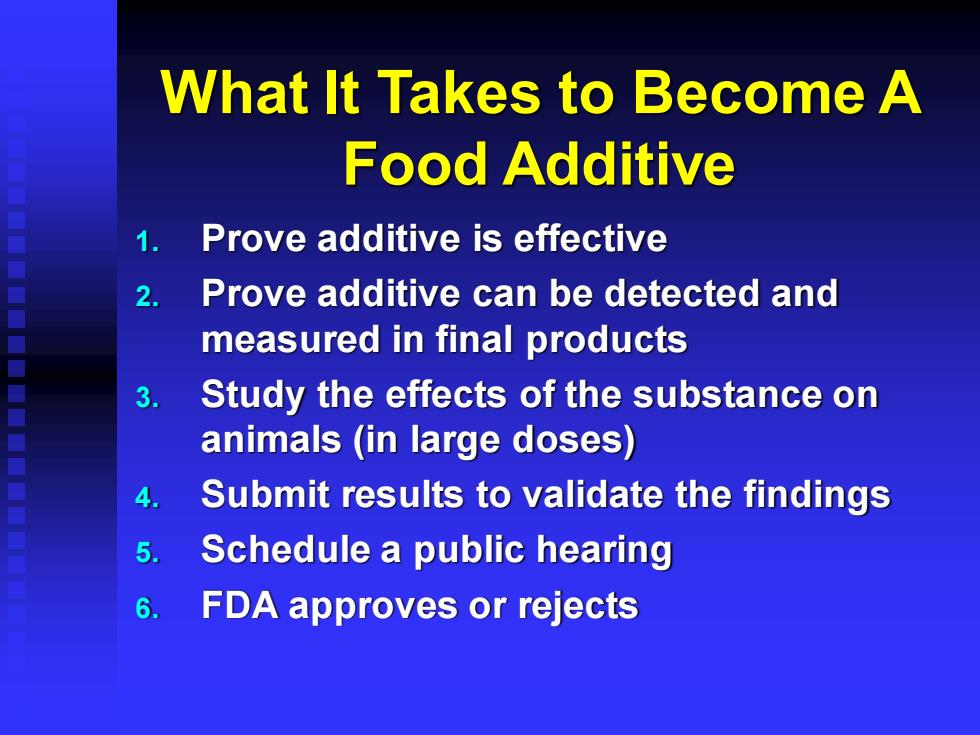
What It Takes to Become A Food Additive 1. Prove additive is effective 2. Prove additive can be detected and measured in final products 3. Study the effects of the substance on animals (in large doses) 4. Submit results to validate the findings 5. Schedule a public hearing 6. FDA approves or rejects
What It Takes to Become A Food Additive 1. Prove additive is effective 2. Prove additive can be detected and measured in final products 3. Study the effects of the substance on animals (in large doses) 4. Submit results to validate the findings 5. Schedule a public hearing 6. FDA approves or rejects
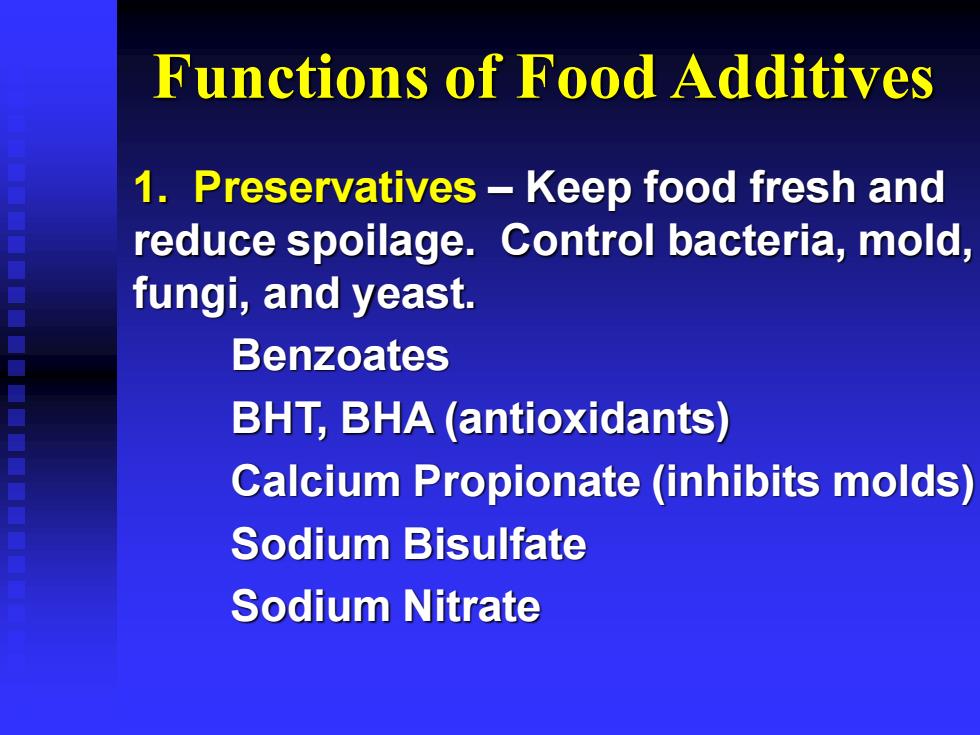
Functions of Food Additives 1. Preservatives – Keep food fresh and reduce spoilage. Control bacteria, mold, fungi, and yeast. Benzoates BHT, BHA (antioxidants) Calcium Propionate (inhibits molds) Sodium Bisulfate Sodium Nitrate
Functions of Food Additives 1. Preservatives – Keep food fresh and reduce spoilage. Control bacteria, mold, fungi, and yeast. Benzoates BHT, BHA (antioxidants) Calcium Propionate (inhibits molds) Sodium Bisulfate Sodium Nitrate